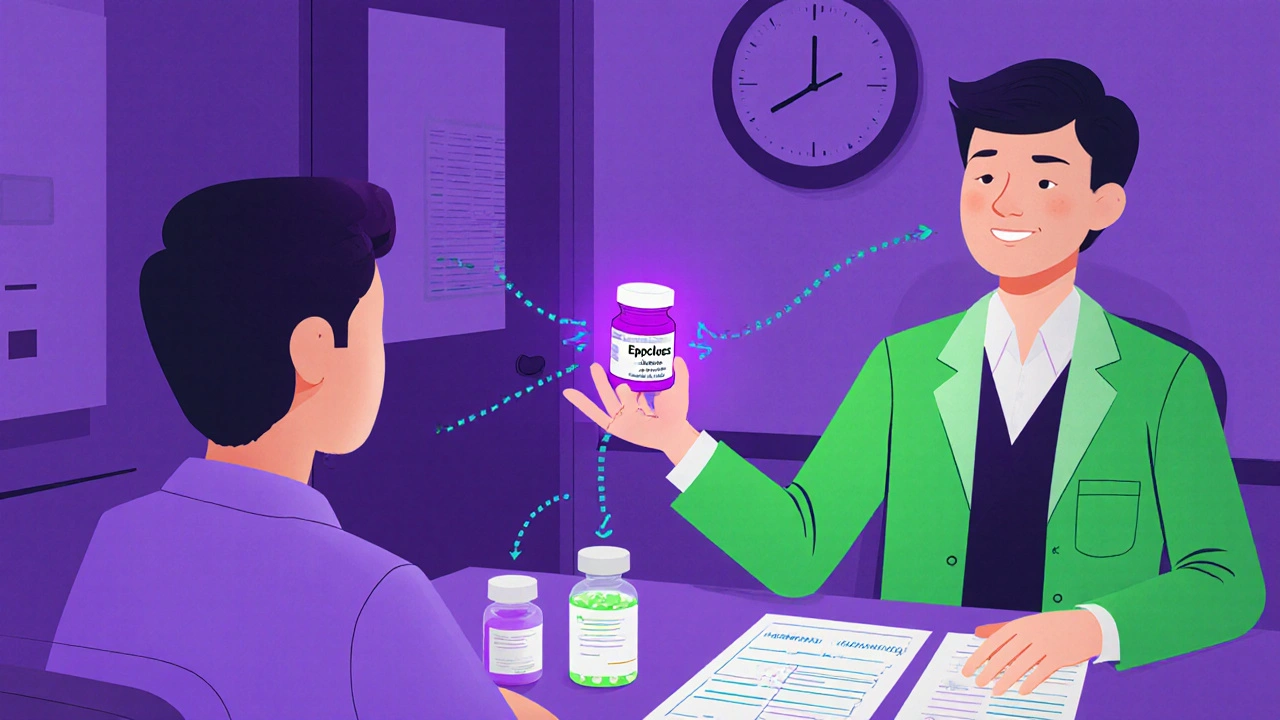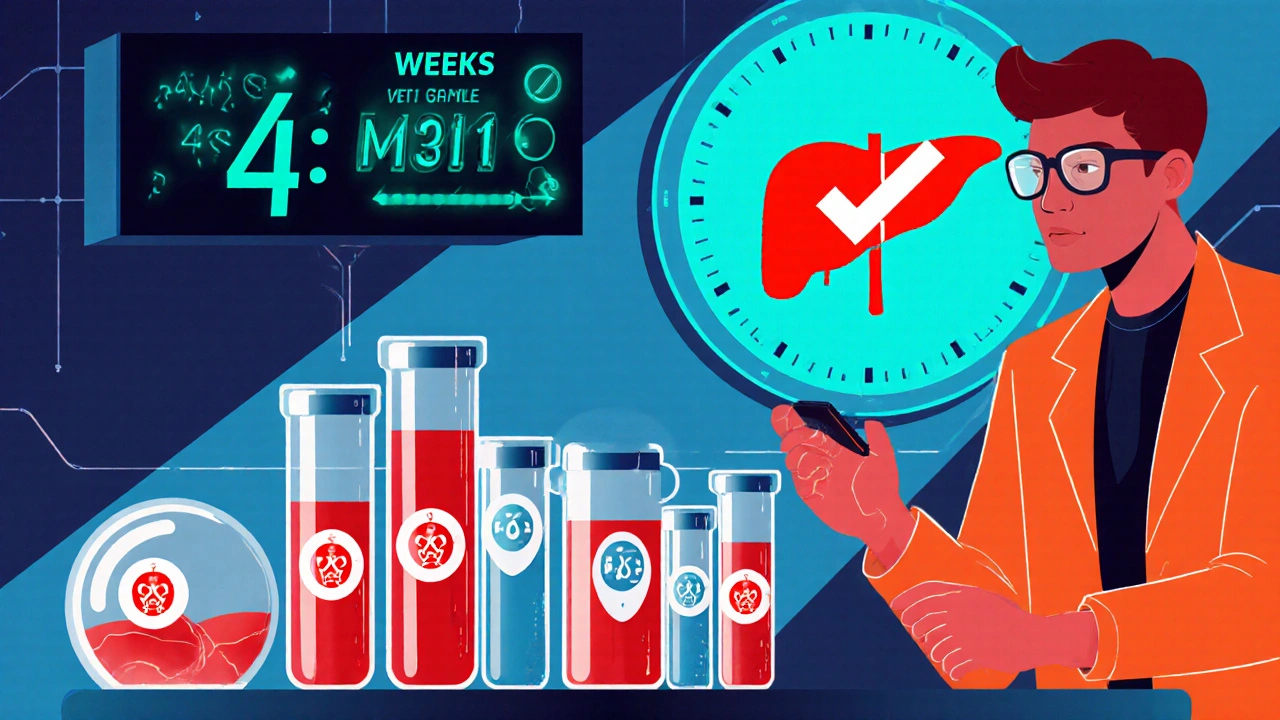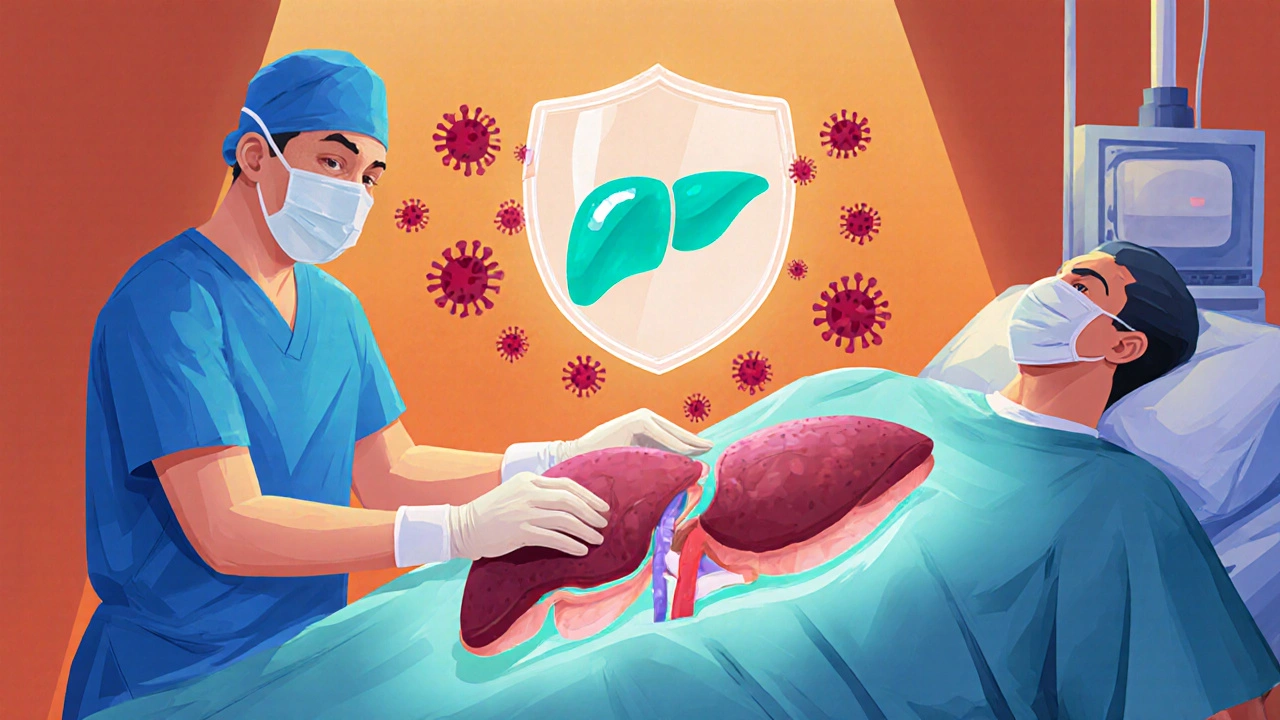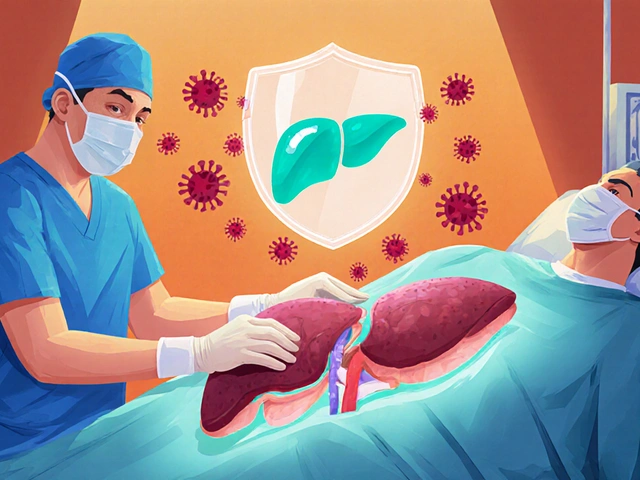Liver Transplant HCV Drug Interaction Checker
Select Immunosuppressants in Use
Hepatitis C virus (HCV) infection remains a leading cause of liver failure worldwide, and many patients only get a chance at a new life after a liver transplant. But once the new organ is in place, the virus can strike again, jeopardising graft survival and patient health. Velpatasvir has emerged as a key player in preventing that rebound, thanks to its broad‑spectrum activity and tolerable safety profile. This guide walks you through how velpatasvir works, why it matters for transplant recipients, and what the latest data say about its real‑world performance.
What Is Velpatasvir?
Velpatasvir is a pangenotypic direct‑acting antiviral (DAA) that inhibits the NS5A protein of hepatitis C virus, blocking viral replication across all six major genotypes. Approved in 2016 as part of the fixed‑dose combination Epclusa (sofosbuvir/velpatasvir), it quickly became a go‑to regimen for patients with chronic HCV, including those with advanced liver disease.
How Velpatasvir Fits Into the Direct‑Acting Antiviral Landscape
DAAs have transformed HCV therapy by targeting specific viral proteins. The main classes are NS3/4A protease inhibitors, NS5A inhibitors, and NS5B polymerase inhibitors. Velpatasvir belongs to the NS5A inhibitor class, sharing a similar mechanism with drugs like ledipasvir and daclatasvir, but with a broader genotype coverage.
Direct‑acting antivirals are oral agents that directly disrupt the hepatitis C virus life cycle, offering cure rates above 95% in most patient groups.
Why Liver Transplant Recipients Need Special Antiviral Strategies
After transplantation, patients are placed on lifelong immunosuppression regimens-most commonly tacrolimus, cyclosporine, or mycophenolate-to prevent graft rejection.. These drugs interact with many DAAs, raising the risk of toxicity or sub‑therapeutic antiviral levels. Moreover, the altered hepatic metabolism post‑surgery can affect drug clearance. Assessing liver function using scores such as the Model for End‑Stage Liver Disease (MELD) and the Child‑Pugh score helps clinicians gauge how aggressively to treat HCV without overloading the new liver. The goal is to achieve a sustained virologic response (SVR) before or shortly after transplant, minimizing the chance of reinfection.
Clinical Evidence: Velpatasvir in the Transplant Setting
Several prospective and retrospective studies have evaluated velpatasvir‑based regimens in liver‑transplant patients:
- In the SOLAR‑1 trial, 120 post‑transplant patients received sofosbuvir/velpatasvir for 12 weeks. SVR12 was achieved in 98% of participants, with only mild fatigue and headache reported.
- A multicenter European cohort (2023) of 85 recipients treated with velpatasvir plus ribavirin (when needed) showed a 95% SVR12 rate, and no cases of acute rejection linked to the therapy.
- Real‑world data from the United States (2024) indicated that velpatasvir‑based regimens maintained stable tacrolimus trough levels after dose adjustments, confirming manageable drug‑drug interactions.
These outcomes underline two key points: (1) velpatasvir delivers cure rates comparable to the general HCV population, and (2) its safety profile remains acceptable even when combined with potent immunosuppressants.

Dosage, Administration, and Drug‑Interaction Management
For adult transplant recipients, the standard dose is one tablet of Epclusa (sofosbuvir 400 mg + velpatasvir 100 mg) taken orally once daily with food. When ribavirin is added (for genotype 3 or prior treatment failure), it is dosed based on body weight and renal function.
Key interaction considerations:
- Tacrolimus: Velpatasvir modestly increases tacrolimus exposure; clinicians should check trough levels after the first week and adjust the dose by approximately 20‑30% if needed.
- Cyclosporine: No significant interaction reported, but monitoring remains prudent.
- Statins: Co‑administration with high‑dose atorvastatin can raise statin levels; consider switching to a lower‑dose statin or an alternative lipid‑lowering agent.
Because velpatasvir is metabolized by CYP3A4 and transported by P‑glycoprotein, any concomitant medication that strongly induces or inhibits these pathways should be reviewed.
Comparing Velpatasvir‑Based Regimens to Other Post‑Transplant Options
| Regimen | Genotype Coverage | SVR12 Rate | Key Drug Interactions | Typical Treatment Duration |
|---|---|---|---|---|
| Sofosbuvir/Velpatasvir | All (1‑6) | 95‑98% | Tacrolimus (increase), cyclosporine (minimal) | 12 weeks (8 weeks for select patients) |
| Sofosbuvir/Ledipasvir | 1‑4, 5‑6 (less robust for 3) | 92‑96% | Similar to velpatasvir; higher ribavirin use in genotype 3 | 12 weeks |
| Glecaprevir/Pibrentasvir | All (1‑6) | 94‑97% | Strong CYP3A4 inhibitor-caution with tacrolimus & cyclosporine | 8‑12 weeks |
Across the board, velpatasvir‑based therapy holds its own, especially for genotype 3 patients where older regimens required ribavirin augmentation. Its once‑daily dosing and relatively mild interaction profile make it a practical choice for busy transplant clinics.
Practical Checklist for Managing HCV in Liver‑Transplant Recipients
- Pre‑transplant assessment: Confirm HCV RNA status, genotype, and liver fibrosis scores (MELD, Child‑Pugh). Evaluate renal function to guide ribavirin use.
- Timing of therapy: Whenever possible, treat before transplant to achieve SVR and avoid post‑operative viral rebound. If not feasible, initiate within the first 3 months post‑transplant.
- Medication reconciliation: List all immunosuppressants, statins, antacids, and herbal supplements. Use a drug‑interaction checker focused on CYP3A4 and P‑gp pathways.
- Monitoring plan: Check HCV RNA at baseline, end of treatment, and 12 weeks after completion. Measure tacrolimus troughs weekly for the first month, then monthly.
- Adverse‑event management: Counsel patients on fatigue, headache, and possible anemia from ribavirin. Adjust immunosuppression promptly if levels deviate.
- Follow‑up after SVR: Continue routine graft surveillance; HCV recurrence is rare after a confirmed SVR, but re‑testing yearly is prudent.

Common Pitfalls and How to Avoid Them
Resistance development: Although rare with velpatasvir, pre‑existing NS5A resistance‑associated substitutions (RAS) can lower cure rates, especially in genotype 3. Perform resistance testing when prior DAA failure is documented.
Renal impairment: Ribavirin accumulates in patients with eGFR <30 mL/min, leading to hemolytic anemia. Opt for ribavirin‑free regimens (e.g., 8‑week velpatasvir alone) when kidney function is borderline.
Drug‑drug interaction oversight: Forgetting to adjust tacrolimus can cause nephrotoxicity. Set up an electronic alert in the transplant pharmacy system to flag any new DAA prescription.
Future Directions: Next‑Generation Antivirals and Ongoing Trials
Research continues to refine post‑transplant HCV care. Phase III trials are testing ultra‑short 4‑week courses of velpatasvir‑based combos in well‑controlled patients, aiming to reduce pill burden even further. Meanwhile, pan‑genotypic protease inhibitors with minimal CYP3A4 impact are in late‑stage development, promising even smoother integration with immunosuppression.
For now, velpatasvir remains a cornerstone therapy-effective, easy to administer, and compatible with the complex medication regimens that transplant recipients face.
Frequently Asked Questions
Can velpatasvir be used before a liver transplant?
Yes. Treating HCV pre‑transplant is ideal because achieving SVR reduces the risk of reinfection of the new graft and may improve post‑operative outcomes.
What is the typical duration of velpatasvir therapy after transplant?
Most clinicians prescribe 12 weeks of sofosbuvir/velpatasvir. In patients with low baseline viral load and no cirrhosis, an 8‑week course may be sufficient.
How does velpatasvir interact with tacrolimus?
Velpatasvir can raise tacrolimus blood levels by about 20‑30%. After starting the antiviral, check tacrolimus troughs within the first week and adjust the dose accordingly.
Is ribavirin always required with velpatasvir in transplant patients?
No. Ribavirin is added mainly for genotype 3 or when resistance‑associated substitutions are present. In many cases, velpatasvir plus sofosbuvir alone provides >95% cure rates.
What monitoring is needed during treatment?
Check HCV RNA at baseline, end of treatment, and 12 weeks post‑treatment. Also monitor tacrolimus levels weekly for the first month, complete blood count if ribavirin is used, and renal function throughout.
Can velpatasvir be given to patients with severe liver dysfunction?
Yes. Velpatasvir is safe in Child‑Pugh class C patients, though dose adjustments are not required. Close monitoring of liver enzymes and bilirubin is still recommended.



Felix Chan
October 19, 2025 at 15:26Velpatasvir has really changed the game for transplant patients.
The cure rates are sky‑high and the side‑effects are mild, which is a huge relief when you’re already on heavy immunosuppression.
It’s great to see real‑world data backing up the trial numbers, especially the low rejection rates.
If you’re on a transplant list, ask your hepatologist about getting on an Epclusa regimen sooner rather than later.
Madhav Dasari
October 19, 2025 at 16:00Absolutely, the community thrives when we share these breakthroughs.
Think of every patient who dodges a potentially fatal relapse-it's like giving them a second chance at life, a rebirth.
For those just stepping out of the ICU, the simplicity of a once‑daily pill can be the difference between delirium and stability.
I always tell newcomers to keep track of their tacrolimus levels, because a steady hand on the meds lets the antiviral do its magic.
DHARMENDER BHATHAVAR
October 19, 2025 at 16:33Monitor tacrolimus weekly for the first month; adjust dosage by 20‑30 % if troughs rise.
This protocol minimizes interaction risk while maintaining graft function.
Kevin Sheehan
October 19, 2025 at 17:06The triumph of velpatasvir is a testament to humanity's relentless quest to tame viral chaos, yet we must question why such life‑saving drugs remain subject to the whims of pharmaceutical monopolies.
Is it not a moral absurdity that the cure is hoarded while millions languish?
The very existence of these DAAs should compel us to dismantle the profit‑driven barriers that dictate who gets to live.
Let us demand true accessibility, lest the miracle of science be reduced to a market commodity.
Jay Kay
October 19, 2025 at 17:40Sure, but the hype overshadows the fact that not every centre can manage the drug‑drug dance.
Some hospitals still fumble the tacrolimus tweaks, leading to avoidable bumps.
Jameson The Owl
October 19, 2025 at 18:13Consider the hidden agenda behind the seamless rollout of velpatasvir its promotion aligns with a broader scheme to cement pharmaceutical dominance in post‑transplant care the data presented rarely mention the long‑term metabolic impact on patients already burdened by immunosuppressants and the subtle shifts in liver enzyme profiles may be dismissed as trivial yet they could herald insidious complications that escape immediate scrutiny the regulatory bodies, influenced by lobbying, often fast‑track approvals without demanding exhaustive post‑marketing surveillance which, in turn, leaves clinicians to navigate a landscape of incomplete safety nets the responsibility therefore falls on the medical community to demand transparent, longitudinal studies that dissect not only SVR rates but also the nuanced interplay between antiviral mechanisms and graft immunology
Rakhi Kasana
October 19, 2025 at 18:46Even a single dose of velpatasvir can tip the scales toward lasting cure.
Thokchom Imosana
October 19, 2025 at 19:20One must approach the velpatasvir narrative with a discerning eye, for the veneer of scientific triumph often conceals a labyrinth of concealed motives.
The pharmaceutical conglomerates, cloaked in the rhetoric of humanitarian progress, have meticulously engineered a market that thrives on chronic dependency rather than genuine eradication.
By positioning velpatasvir as the pan‑genotypic panacea, they subtly divert attention from the underlying structural vulnerabilities in transplant immunology that remain unaddressed.
It is no coincidence that the pivotal trials were funded by the very entities that now reap billions from the subsequent prescriptions.
The inclusion criteria, meticulously sculpted, exclude a subset of patients whose complex comorbidities could unravel the alleged safety profile, thereby preserving an immaculate veneer of success.
Moreover, the post‑marketing surveillance data are curated, with adverse events relegated to obscure appendices, while the headline statistics flaunt a 98 % SVR, a figure that dazzles but does not illuminate the long‑term graft interaction intricacies.
The tacrolimus‑velpatasvir synergy, presented as merely a modest increase in exposure, masks a cascade of downstream metabolic perturbations that only become apparent after years of subtle immunologic drift.
Scholars who dare to question these premises are often sidelined, their dissent dismissed as fear‑mongering, a tactic reminiscent of historic attempts to stifle scientific dissent.
Yet, the truth persists in the whispered corridors of transplant units where seasoned hepatologists share cautionary tales of unexpected enzyme spikes and cryptic graft irritations.
The elitist narrative that velpatasvir alone can rescue every post‑transplant patient ignores the pluralistic reality of host genetics, viral quasispecies, and the stochastic nature of immune reconstitution.
One should also note the strategic timing of the drug’s release, coinciding with policy shifts that favor rapid formulary inclusion, thereby ensuring maximal market penetration before comprehensive longitudinal data could be amassed.
In this orchestration, the patient’s voice is relegated to a peripheral echo, while the commercial chorus sings triumph.
The responsible clinician must therefore navigate not only the pharmacologic landscape but also the geopolitical currents that steer drug availability.
Ultimately, vigilance and critical appraisal become the physician’s most potent tools against a system that blends benevolence with profit.